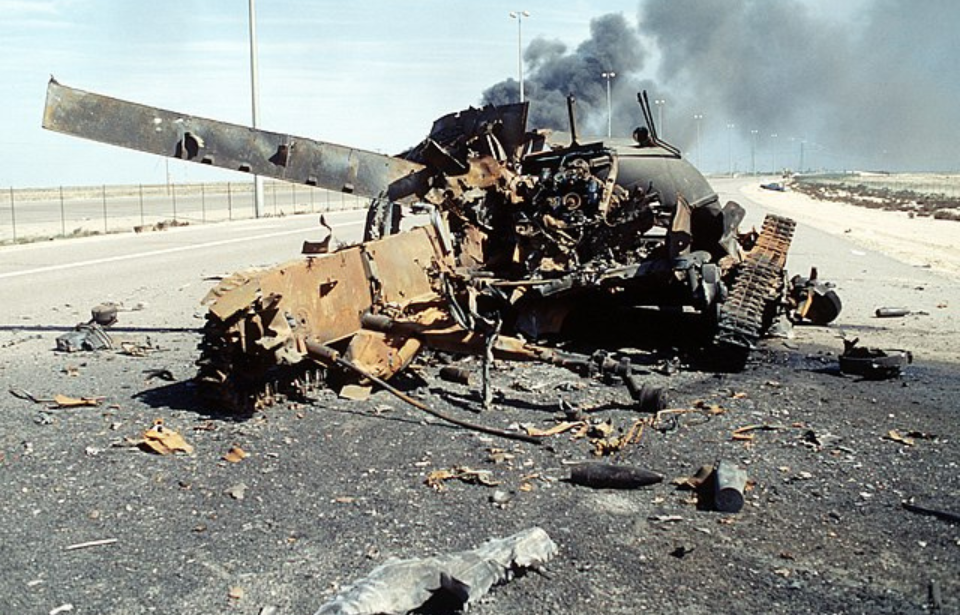The Highway of Death may sound like the title of a grim novel, but it’s a real place with a history that’s even more harrowing than fiction. This stretch of road in Kuwait is known as Highway 80 and it became the backdrop for one of the most devastating attacks during the Gulf War. The images of destroyed military vehicles and charred remains have been etched into the collective memory of the international community, serving as a stark reminder of the destructive power of modern warfare.
Prelude to the Highway of Death
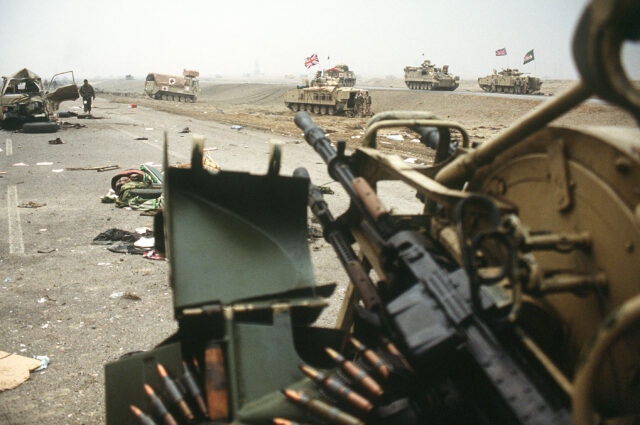
Before we can understand the significance of the Highway of Death, we must first look at the geopolitical climate that set the stage for its creation. The Gulf War, sparked by Iraq’s invasion of Kuwait in August 1990, drew international attention and led to action by a broad coalition force led by the United States.
The conflict’s primary objective was to expel Iraqi troops from Kuwait and restore the country’s sovereignty. As the coalition forces launched a massive offensive, the retreating Iraqi Army found itself on Highway 80, heading north toward Iraq.
In late February 1991, coalition aircraft targeted the retreating convoy along the roadway. The assault was both systematic and relentless leaving a trail of destruction over several miles. The event, which unfolded over a few days, saw the annihilation of not just military vehicles, but also the lives of Iraqi soldiers and civilians. The exact number of casualties remains disputed, but the aftermath was undeniably catastrophic.
Firsthand accounts and photographic evidence
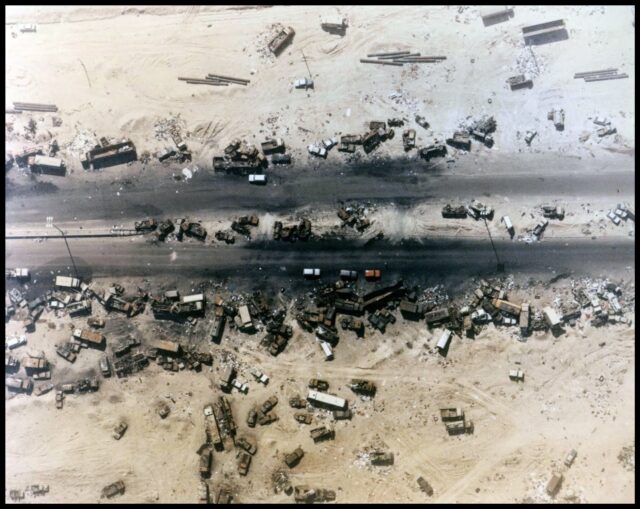
Photographs and accounts from journalists and military personnel who witnessed the aftermath presented the world with a grim reality of the aerial assault’s devastation. The images were shocking, showing a seemingly endless line of burned-out vehicles and bodies, some within the automobiles and others scattered along the roadside.
These visuals prompted a global conversation about the nature of the attack and raised questions about the proportionality and necessity of such heavy bombardment. The Highway of Death wasn’t just the result of traditional warfare – it was significantly influenced by advancements in military technology.
Precision-guided munitions and sophisticated surveillance allowed coalition forces to strike with unprecedented accuracy and efficiency. This technological edge was a factor in the coalition’s military strategy, which aimed to incapacitate the Iraqi forces swiftly to minimize coalition casualties and bring an end to the conflict.
Ethical dilemmas and environmental destruction
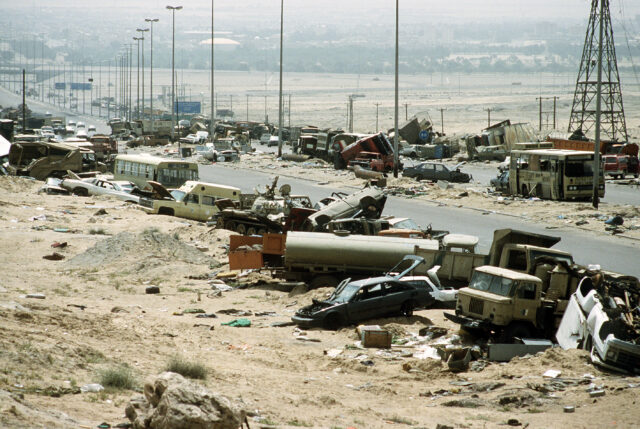
The international response to what occurred along the Highway of Death was mixed. While some viewed the attack as a necessary act of war, others criticized it as a potential war crime. The debate centered around the principles of necessity, distinction and proportionality under the laws of armed conflict; the incident raised profound ethical questions about the conduct of war and the protection of human rights during armed conflicts.
Beyond the immediate human cost, the Highway of Death had significant environmental and societal repercussions. The burning and destruction of vehicles led to oil leaks and fires that contributed to pollution and health hazards. The societal impact was also profound, as the event became a symbol of the suffering caused by the Gulf War and affected the psyche of both the Iraqi people and the international community.
Highway of Death in media and its current state
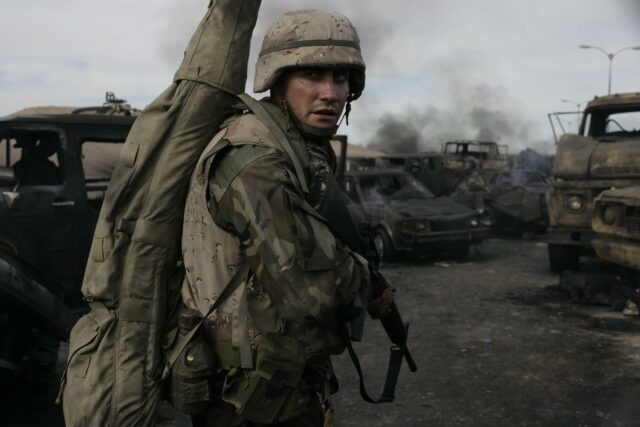
The Highway of Death has been depicted in various forms of media and art, such as Jarhead (2005). These portrayals serve as a testament to the enduring impact of the location on our cultural consciousness, especially since it wasn’t a topic the media wanted to cover, due to its gruesome nature.
More from us: Willy-Nicky Telegrams: The Tsar and Kaiser’s Final Attempt to Avert World War I
Today, Highway 80 has been rebuilt and bears little resemblance to the haunting images of 1991, meaning visitors might find it hard to imagine the scale of the tragedy that once occurred there. However, memorials and the stories of locals keep the memory of the Highway of Death alive, serving as a somber reminder of the past.
